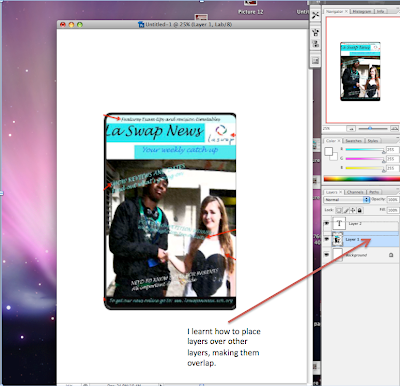Contents Page
Double Page Spread

 There is far more than meets the eye in designing a successful magazine: layout, font, research into readerships and overall look. This has been something I have really enjoyed about the project. I feel I have gained confidence with the tools used in photoshop. This meant that towards the later parts of forming my magazine, I was able to move a lot quicker with the knowledge that I acquired. Working on this project introduced me to different aspects of design that I had not thought about before, such as making a page layout look interesting and appealing, contrasting photographs and where text would look most accessible. All of these skills are important in today's modern world in which a knowledge of computer technology is very important in many professions.
There is far more than meets the eye in designing a successful magazine: layout, font, research into readerships and overall look. This has been something I have really enjoyed about the project. I feel I have gained confidence with the tools used in photoshop. This meant that towards the later parts of forming my magazine, I was able to move a lot quicker with the knowledge that I acquired. Working on this project introduced me to different aspects of design that I had not thought about before, such as making a page layout look interesting and appealing, contrasting photographs and where text would look most accessible. All of these skills are important in today's modern world in which a knowledge of computer technology is very important in many professions.
 'Melodies Choice' is a magazine dedicated to serious music lovers of whatever genre. However, even though I include styles such as R&B, the image of my magazine is not glamorous or glossy. It doesn't focus on the image of the artist, just the music they produce. This means that the articles inside are mainly music based, therefore 'Melodies Choice' includes many reviews of albums and live concerts. It contains information on the latest music based news, and has some stories on artists, however none of them are written in the same gossip format as magazines like 'Hello'.
'Melodies Choice' is a magazine dedicated to serious music lovers of whatever genre. However, even though I include styles such as R&B, the image of my magazine is not glamorous or glossy. It doesn't focus on the image of the artist, just the music they produce. This means that the articles inside are mainly music based, therefore 'Melodies Choice' includes many reviews of albums and live concerts. It contains information on the latest music based news, and has some stories on artists, however none of them are written in the same gossip format as magazines like 'Hello'.  My audience would be formed of both male and female readers. Because my publication is quite versatile it attracts many different people, making it impossible to generalize one specific type of reader. But the style of my magazine would appeal in my view to mostly indie fans, as there is more indie based music included within the magazine than any other. The disposable income of my targeted demography is generally modest. (approximately the amount of the weekly EMA allowance as my magazine targets mainly students.) The psychographic of my publication can vary. But social groups interested in the latest celebrity news and fashion styles will not find my magazine too appealing. Music fans in any career could be interested in my magazine, but most likely they will have a high interest within the artistic and creative industries. 'Melodies Choice' is a British influenced magazine, so does not include aspects from the glamorous American lifestyle.
My audience would be formed of both male and female readers. Because my publication is quite versatile it attracts many different people, making it impossible to generalize one specific type of reader. But the style of my magazine would appeal in my view to mostly indie fans, as there is more indie based music included within the magazine than any other. The disposable income of my targeted demography is generally modest. (approximately the amount of the weekly EMA allowance as my magazine targets mainly students.) The psychographic of my publication can vary. But social groups interested in the latest celebrity news and fashion styles will not find my magazine too appealing. Music fans in any career could be interested in my magazine, but most likely they will have a high interest within the artistic and creative industries. 'Melodies Choice' is a British influenced magazine, so does not include aspects from the glamorous American lifestyle.